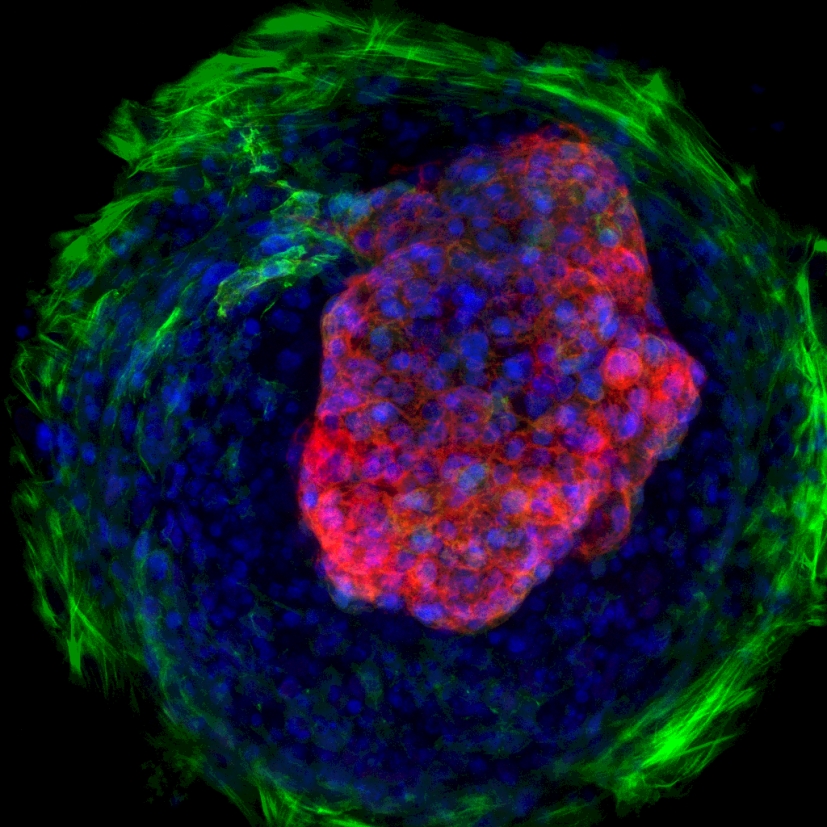Human 'Mini Hearts' Made in Lab (and They Beat)

Living "mini hearts" — structures that resemble tiny, primitive, beating hearts — can be created from human stem cells, researchers say.
These miniature heartlike structures could help scientists test heart drugs for safety, and learn more about how the heart develops in order to help prevent defects, investigators added.
"It might even be possible to grow pieces of heart to serve as patches during heart surgery, but that's a long way off," study co-senior author Dr. Bruce Conklin, a physician and stem cell biologist at the Gladstone Institute of Cardiovascular Disease in San Francisco, told Live Science. Researchers could also use these structures as models for fixing damaged hearts, he said.
Conklin and his colleagues made the hearts from human pluripotent stem cells, which are are immature cells that have the ability to become any tissue in the body. In the past decade or so, researchers have discovered how to use a variety of chemicals linked with stem cell activity to reprogram mature cells into becoming what are known as induced pluripotent stem cells, which could one day replace cells that have been destroyed in people with diseases or injuries.
Previous research has used stem cells to create sheets of beating heart muscle in petri dishes, as well as tubes of heart cells that could act like tiny pumps. However, these projects did not create the kind of beating chambers found in the hearts of living animals, and so might not reflect the normal 3D development of the embryonic heart.
In the new work, the scientists found that when stem cells are confined to tiny pits, barely the size of a pen tip, they can develop into microscopic beating chambers. [Top 3 Techniques for Creating Organs in the Lab]
The researchers etched pits 200 to 600 microns wide into the bottom of a petri dish. (For comparison, the average human hair is about 100 microns wide.) Next, they grew colonies of human stem cells in these pits. The stem cells were genetically reprogrammed from adult skin tissue.
Get the world’s most fascinating discoveries delivered straight to your inbox.
Normally, when stem cells are grown in holes the size of a quarter or larger, they grow into sheets of tissue. However, the researchers found that when stem cells are grown in tiny pits, the mechanical cues they received from confinement in such tight spaces helped them organize into hollow chambers. Cells along the edges of the pits experienced greater mechanical stress and tension, and developed to look more like fibroblasts, which are the cells that produce the collagen seen in connective tissue. In contrast, the cells in the center developed into heart muscle cells.
When the researchers exposed these heartlike structures to the infamous drug thalidomide, which is known for causing heart defects and deformed limbs, the structures failed to develop properly — they were smaller, had difficulties contracting, and had lower beat rates compared with heart tissue that was not exposed to the drug.
These findings suggest these structures could help screen drugs that are still in testing for dangerous side effects, replacing animal models.
"The most commonly reported birth defects involve the heart, and the potential for generating cardiac defects is of utmost concern in determining drug safety during pregnancy," Conklin said in a statement. "Each year, as many as 280,000 pregnant women are exposed to drugs with evidence of potential fetal risk."
The scientists detailed their findings online today (July 14) in the journal Nature Communications.
Follow Live Science @livescience, Facebook & Google+. Original article on Live Science.



